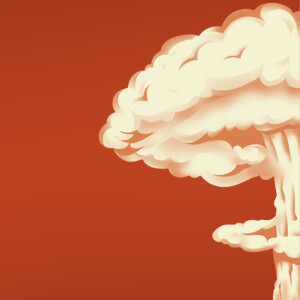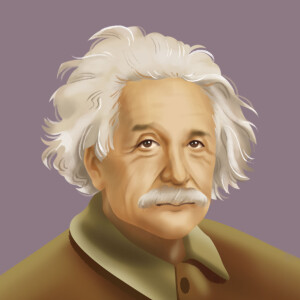Episodes

Monday Sep 11, 2023
Monday Sep 11, 2023
Chapter 1:Summary of Ikigai
"Ikigai: The Japanese Secret to a Long and Happy Life" by Héctor García explores the concept of ikigai, which translates to "reason for being" in English. The book delves into the principles of ikigai and how it can lead to a fulfilling and meaningful life.
The author begins by discussing the history and origins of ikigai, tracing its roots to the island of Okinawa, where people live longer and healthier lives. He explores the various factors that contribute to a sense of ikigai, such as finding purpose, pursuing passions, and cultivating strong relationships.
García explains that ikigai encompasses several components, including what you love, what you are good at, what the world needs, and what you can be paid for. He suggests that finding the intersection of these elements will lead to a balanced and purposeful life.
The book offers practical advice and tips for discovering one's ikigai, including reflection exercises and personal anecdotes. García also interviews individuals who have found their ikigai and shares their stories, providing inspiration and examples for readers.
Additionally, "Ikigai" explores the cultural and societal factors that contribute to a sense of ikigai in Japan. It discusses the importance of community, traditional practices, and a balanced lifestyle in cultivating a fulfilling existence.
Overall, "Ikigai: The Japanese Secret to a Long and Happy Life" provides insights and guidance on how to discover and nurture one's ikigai, ultimately leading to a more purposeful and content life.
Chapter 2:The Meaning of of Ikigai
Ikigai is a Japanese concept that translates to "reason for being" or "purpose in life." In his book "Ikigai: The Japanese Secret to a Long and Happy Life," Héctor García explores this concept and the factors that contribute to a fulfilling and meaningful life. The book delves into the experiences and stories of the people of Okinawa, known for their longevity and contentment. It explores the intertwining of passion, mission, profession, and vocation, guiding readers on a journey towards discovering and living their own ikigai.
Chapter 3: Ikigai Chapters
Chapter 1: Introduction to Ikigai - The chapter introduces the concept of Ikigai, a Japanese philosophy that translates to "the reason for being." It explores the idea that having a sense of purpose and meaning in life is essential for overall well-being and happiness.
Chapter 2: Finding Your Passion - This chapter focuses on finding and pursuing one's passion. It delves into various techniques and exercises to help identify and nurture one's interests and talents.
Chapter 3: Discovering Your Mission - The chapter discusses the importance of having a mission in life, a goal or purpose that gives meaning to our actions. It explores ways to reflect on and uncover one's mission, along with examples of how individuals have found and pursued their own missions.
Chapter 4: Balancing Tasks and Joy - This chapter explores the balance between tasks and joy in our lives. It discusses the importance of finding joy in everyday activities, even when dealing with mundane tasks, and offers strategies to incorporate more joy into our routines.
Chapter 5: Nurturing Relationships - The chapter highlights the significance of relationships and social connections in our well-being. It provides insights into fostering meaningful relationships, both with family and friends, and explores the role of community and a sense of belonging.
Chapter 6: Living in the Present Moment - This chapter focuses on mindfulness and being fully present in the moment. It discusses the power of gratitude and appreciating life's simple pleasures, as well as techniques for practicing mindfulness in daily life.
Chapter 7: Overcoming Challenges - The chapter delves into the idea of embracing challenges and setbacks as opportunities for personal growth. It explores techniques for resilience, perseverance, and finding meaning in difficult times.
Chapter 8: Continual Growth and Reinvention - This chapter emphasizes the importance of continuous growth and adaptation. It explores the idea that Ikigai is not a fixed concept but evolves and changes throughout life, offering strategies for embracing change and reinventing oneself.
Chapter 9: Sharing Ikigai - The final chapter discusses the importance of sharing one's Ikigai with others. It explores ways to contribute to society and make a positive impact, highlighting the joy and fulfillment that comes from helping others find their own sense of purpose.
Overall, the book delves into the various aspects of Ikigai and provides practical guidance and examples to help readers find and cultivate their own sense of purpose and fulfillment in life.

Monday Sep 11, 2023
Monday Sep 11, 2023
Chapter 1:What is Frida about
"Frida" by Hayden Herrera is a biography that explores the life of the renowned Mexican artist, Frida Kahlo. The book delves into Kahlo's upbringing, her intimate relationship with fellow artist Diego Rivera, her struggles with physical and emotional pain, and the impact her artwork had on the art world. It examines the various influences that shaped Kahlo's art, including her Mexican heritage, surrealism, and personal experiences. Herrera also analyzes the feminist elements present in Kahlo's work and the significance of her role as a female artist in a male-dominated field. Overall, the book provides a comprehensive portrait of Kahlo, her art, and the tumultuous life she led.
Chapter 2:Author of Frida
Hayden Herrera is an American author and art historian, best known for her biography of the Mexican artist Frida Kahlo. Born in 1949, Herrera has written extensively on various topics related to art and culture, but her book "Frida: A Biography of Frida Kahlo" remains one of her most acclaimed works.
Published in 1983, Herrera's biography of Frida Kahlo is considered to be one of the most comprehensive and authoritative accounts of the artist's life. The book delves into Kahlo's personal and artistic journey, exploring her complex relationships, physical and emotional pain, and her significant contributions to the art world. It was through Herrera's meticulous research and deep understanding of Kahlo's works that she brought the artist's story to a wider audience.
Besides her work on Frida Kahlo, Hayden Herrera has also written biographies of other notable artists, including Arshile Gorky and Mary Frank. Her books combine scholarship, storytelling, and an ability to evoke the essence of an artist's life and work.
Through her thorough research and compelling narratives, Hayden Herrera has made a significant contribution to the understanding and appreciation of art history. Her biographies not only shed light on the lives of artists but also provide insights into the cultural and historical contexts in which they lived and created.
Chapter 3:Why is Frida worth reading
"Frida" by Hayden Herrera is worth reading for several reasons:
In-depth biography: Hayden Herrera provides a detailed and comprehensive account of Frida Kahlo's life. She explores Kahlo's childhood, her experiences with polio and a devastating accident, her relationships with family and friends, her artistic journey, and her tumultuous marriage with Diego Rivera. Herrera's research is extensive, making this biography one of the most authoritative sources on Kahlo's life.
Artistic insights: Frida Kahlo is known for her unique and introspective artistic style. Herrera explores the inspirations behind Kahlo's paintings and delves into the symbolism and emotions embedded within her artwork. By examining Kahlo's creative process and various influences, readers gain a deeper appreciation and understanding of her artistic vision.
Cultural and historical context: Herrera provides a rich backdrop of the political and cultural climate in Mexico during the time in which Kahlo lived. This offers readers a broader understanding of how Kahlo's life and art were shaped by the Mexican Revolution, the rise of communism, and other significant events of the era. Herrera also explores Kahlo's relationship with important figures in the art world, such as Rivera, André Breton, and others, emphasizing the impact they had on her career.
Feminist perspective: "Frida" presents an insightful analysis of Kahlo's position as a woman artist in a male-dominated field. Herrera examines Kahlo's unique portrayal of female identity, sexuality, and the pain she experienced throughout her life. This perspective highlights Kahlo's contribution to feminist art and serves as an inspiration for women overcoming societal barriers.
Notable writing style: Herrera's writing style is engaging, making "Frida" an accessible and enjoyable read. She seamlessly weaves together personal anecdotes, quotes, and historical facts, creating a compelling narrative that keeps readers engaged throughout the book. Herrera's ability to humanize Kahlo and bring her story to life is one of the reasons why "Frida" is highly regarded.
Overall, "Frida" by Hayden Herrera is worth reading due to its meticulous research, artistic insights, cultural and historical context, feminist perspective, and engaging writing style. It provides an extensive and nuanced understanding of Frida Kahlo, her life, and her enduring impact on the world of art.

Friday Sep 08, 2023
Friday Sep 08, 2023
Chapter 1:Summary of Scarcity
"Scarcity" by Sendhil Mullainathan is a book that explores the concept of scarcity and its impact on individuals and society. The central argument of the book is that scarcity, whether it be of time, money, or other resources, creates a mindset that affects decision-making and behavior.
The book begins by detailing the psychological and cognitive effects of scarcity. When individuals are faced with scarcity, their mental bandwidth narrows, making it difficult to process and make good decisions. This can lead to poor choices and a cycle of scarcity that becomes difficult to escape.
Mullainathan also discusses how scarcity affects various aspects of life, including poverty, education, and personal relationships. Scarcity perpetuates poverty, as individuals living in poverty are more likely to make short-sighted decisions due to constant scarcity of resources. Similarly, scarcity affects education, as students from scarce backgrounds may struggle to focus and succeed academically.
The book also delves into the concept of tunneling, which refers to the narrowing of focus and attention due to scarcity. When individuals are tunneling, they become hyper-focused on the scarcity at hand and neglect other important aspects of their lives. This can lead to less effective problem-solving and an inability to prioritize long-term goals.
In addition to exploring the effects of scarcity, the book also offers practical strategies for managing scarcity and mitigating its negative impacts. One solution proposed is the use of "slack" or creating buffer time and resources to alleviate scarcity. The book also emphasizes the importance of creating more inclusive policies and systems that reduce scarcity for disadvantaged individuals and communities.
Overall, "Scarcity" provides a comprehensive analysis of the psychological, social, and economic effects of scarcity. It highlights the importance of understanding and addressing scarcity in order to create a more equitable and prosperous society.
Chapter 2:The Meaning of of Scarcity
The book "Scarcity" by Sendhil Mullainathan explores the concept of scarcity and its impact on human behavior and decision-making. Mullainathan, along with co-author Eldar Shafir, delves into the psychological and economic dimensions of scarcity in various domains of life, including time, money, and resources.
The main argument of the book is that scarcity, whether it is experienced as a lack of time, money, or other resources, has a significant influence on how people think and behave. Scarcity captures our attention, impairs our cognitive functions, and changes our priorities and decision-making processes. The authors argue that scarcity creates a mindset of tunnel vision, where individuals focus disproportionately on the urgent needs or immediate problems associated with scarcity, often neglecting long-term planning, self-control, and important aspects of life.
By examining real-life examples and conducting numerous experiments, Mullainathan and Shafir shed light on how scarcity affects people's cognitive bandwidth, mental bandwidth, and overall well-being. They also explore the implications of scarcity on various social issues such as poverty, education, and public policy.
Overall, the book aims to help readers understand the cognitive and behavioral challenges individuals face in the context of scarcity and provides insights into how societies can address these challenges to improve individual and collective well-being.
Chapter 3: Scarcity Chapters
Chapter 1: The Paradox of Scarcity
In this chapter, Mullainathan introduces the concept of scarcity and highlights its paradoxical nature. He explains that when people are faced with scarcity, whether it is a lack of time, money, or other resources, their cognitive capacity becomes compromised. Mullainathan argues that scarcity captures the minds of individuals, making it difficult for them to think about anything else other than solving their scarcity problem.
Chapter 2: Scarcity Captures the Mind
Mullainathan delves deeper into how scarcity affects cognitive functioning in this chapter. He discusses the concept of bandwidth, which refers to the mental capacity required to process information and make decisions. Scarcity, he argues, reduces bandwidth, as individuals become consumed by thoughts related to their scarcity. This narrowed focus can lead to tunnel vision, decreased self-control, and impaired decision-making.
Chapter 3: Running on Mental Bandwidth
Here, Mullainathan explores the consequences of reduced mental bandwidth caused by scarcity. He explains that when individuals are constantly preoccupied with scarcity, they are more likely to make impulsive decisions, engage in short-term thinking, and neglect long-term goals. This behavior can perpetuate a cycle of scarcity, as poor decision-making exacerbates existing scarcity problems.
Chapter 4: The Scarcity Trap
In this chapter, Mullainathan discusses how scarcity can trap individuals in a cycle of poverty. He explains that scarcity creates a scarcity mindset, where individuals become focused on immediate needs rather than investing in long-term solutions. This mindset can make it difficult to escape poverty, as individuals are constantly fighting a scarcity battle without being able to plan for the future.
Chapter 5: The Bandwidth Tax
Mullainathan explores the concept of the "bandwidth tax" in this chapter, which refers to the cognitive costs imposed by scarcity. He discusses how scarcity leads to increased stress levels, decreased self-control, and impaired cognitive functioning. This bandwidth tax can have far-reaching consequences, affecting not only individuals but also their families, communities, and society as a whole.
Chapter 6: The Tunneling Effect
Here, Mullainathan focuses on the phenomenon of tunneling, which occurs when individuals are so focused on solving their scarcity problem that they neglect other important aspects of their lives. He provides examples of tunneling in various contexts, including financial decision-making, education, and healthcare. Mullainathan emphasizes the need to address tunneling in order to create effective solutions for scarcity.
Chapter 7: The Self-Reinforcing Nature of Scarcity
In this chapter, Mullainathan explores how scarcity can become self-reinforcing. He explains that when individuals face scarcity, they often resort to short-term solutions that provide temporary relief but exacerbate their long-term scarcity. This self-reinforcing nature of scarcity can create a vicious cycle that is difficult to break out of, leading to persistent poverty and inequality.
Chapter 8: Managing Scarcity
Mullainathan concludes the book by discussing strategies for managing scarcity. He emphasizes the importance of creating buffer stocks, or reserves, to mitigate the negative effects of scarcity. He also highlights the value of mindset interventions that help individuals develop a more future-oriented perspective. Mullainathan argues that by understanding and addressing the cognitive consequences of scarcity, it is possible to break the cycle and promote well-being for individuals and society.

Friday Sep 08, 2023
Friday Sep 08, 2023
Chapter 1:What is Hiroshima about
Hiroshima by John Hersey is a non-fiction book that details the experiences of six survivors in the aftermath of the atomic bombing of Hiroshima, Japan, in 1945. The book was first published as a lengthy article in The New Yorker in 1946 and later expanded into a full-length book. It provides a detailed account of the events leading up to the bombing, the immediate impact of the explosion, and the long-lasting physical and emotional effects on the survivors.
Hersey focuses on the personal stories of six individuals who lived through the devastation, including doctors, nurses, and ordinary citizens. He explores their courageous efforts to cope with the immediate aftermath, their struggles with injuries and radiation sickness, and the emotional trauma experienced by each survivor. The book also delves into the broader context of the bombing, including the political climate, military strategy, and the overall devastation caused by the atomic bomb.
Hiroshima is a powerful and haunting account of the human suffering caused by the atomic bombing. It aims to provide a firsthand perspective on the consequences of nuclear weapons and the importance of understanding the human impact of such catastrophic events.
Chapter 2:Author of Hiroshima
John Hersey was an American author and journalist, best known for his compelling and influential work "Hiroshima." Born on June 17, 1914, in Tientsin, China, Hersey attended Yale University and later pursued a career in writing.
During World War II, Hersey worked as a war correspondent, covering various events across Europe, the Pacific, and Asia. However, it was his groundbreaking book "Hiroshima" that propelled him to literary fame. Published in 1946, a year after the atomic bombing of Hiroshima, the book offers a detailed and personal account of the experiences of six survivors from different walks of life.
Hersey's meticulous research and ability to bring the survivors' stories to life revolutionized the way people viewed the atomic bomb and its long-lasting effects. The book became a masterpiece of narrative reporting and has been widely recognized for its humanistic approach to a catastrophic event.
John Hersey's "Hiroshima" remains one of the most important works of 20th-century literature, exposing the horrors of nuclear warfare and advocating for peace. Hersey continued his writing career, producing numerous novels, essays, and works of non-fiction. He passed away on March 24, 1993, but his legacy as a compassionate and thought-provoking author lives on.
Chapter 3:Why is Hiroshima worth reading
"Hiroshima" by John Hersey is worth reading for several reasons:
Vivid portrayal of the human experience: The book masterfully captures the horrific aftermath of the atomic bombing of Hiroshima, offering in-depth accounts of the experiences of six survivors. Through their stories, the book provides a human face to the devastating event, evoking profound empathy and understanding for the victims.
Historical significance: The bombing of Hiroshima was a turning point in world history, ushering in the nuclear age and forever changing the landscape of warfare. By detailing the immediate aftermath and long-term effects on the survivors, "Hiroshima" provides a crucial historical documentation of the event, ensuring that the world does not forget the catastrophic consequences of nuclear weapons.
Ethical considerations: The book prompts readers to grapple with the moral implications of using atomic weapons, exploring questions of responsibility and the human cost of warfare. It raises important ethical debates and challenges readers to reflect on the potential consequences of their actions.
Engaging storytelling: Hersey's style of storytelling is compelling and captivating. He presents the survivors' stories in a straightforward, journalistic manner, making the book accessible to a wide range of readers. The narrative flow keeps readers engaged, while the individual accounts illuminate various aspects of the bombing and its aftermath.
Social and cultural impact: "Hiroshima" played a significant role in shaping public opinion and discourse on the atomic bombing. It exposed the harsh reality of nuclear warfare to a wider audience, catalyzing discussions about the use of atomic weapons and their implications. The book sparked important conversations surrounding war, peace, and humanitarian concerns.
Overall, "Hiroshima" offers a poignant and deeply moving portrayal of one of the darkest moments in human history. It is a powerful reminder of the human capacity for resilience,

Thursday Sep 07, 2023
Thursday Sep 07, 2023
Chapter 1:what is The Four Agreements about
"The Four Agreements" by Don Miguel Ruiz is a bestselling self-help and spiritual book that presents a code of conduct based on ancient Toltec wisdom. It proposes four agreements that individuals can make with themselves to create love and happiness in their lives. These agreements are:
Be impeccable with your word: This agreement emphasizes the importance of integrity and the power of our words. It encourages individuals to speak with honesty, kindness, and thoughtfulness, avoiding gossip or spreading negativity.
Don't take anything personally: This agreement reminds readers that other people's opinions and actions are a reflection of their own reality, not of us. It encourages individuals not to allow the opinions or actions of others to negatively affect them.
Don't make assumptions: This agreement suggests that making assumptions leads to misunderstandings and needless suffering. It encourages individuals to seek clarification and communicate openly rather than assuming or jumping to conclusions.
Always do your best: This agreement emphasizes the importance of personal growth and continuous effort. It encourages individuals to give their best in all aspects of their lives without judgment or attachment to the outcome.
"The Four Agreements" offers practical guidance and insights into personal freedom, fulfillment, and transformation by reshaping the way individuals think, perceive, and interact with the world around them. It aims to help readers break free from limiting beliefs and patterns, leading to a more authentic and joyful existence.
Chapter 2:Author of The Four Agreements
Don Miguel Ruiz is a renowned Mexican author and spiritual teacher. He was born on August 27, 1952, in rural Mexico, into a family of healers. Ruiz initially trained with his mother, a curandera (healer), and his grandfather, a nagual (shaman), to carry on the family tradition. However, he later transitioned into the profession of a surgeon, receiving his medical degree from the Universidad de Guadalajara.
While his medical training equipped him with a scientific perspective, Ruiz ultimately felt drawn towards exploring the spiritual aspect of human existence. In the early 1990s, a life-changing event led him to abandon his medical practice and embark on a new path dedicated to sharing his ancestral teachings, wisdom, and spiritual insights.
One of Ruiz's most influential works is "The Four Agreements," a book first published in 1997. In this book, Ruiz presents four principles to guide individuals towards personal freedom and happiness by shattering self-limiting beliefs and adopting new agreements based on truth and self-love. The Four Agreements – be impeccable with your word, don't take anything personally, don't make assumptions, and always do your best – serve as a practical guide for personal transformation and spiritual awakening.
Ruiz's teachings combine ancient Toltec wisdom with modern approaches to self-improvement, making them accessible and applicable to people from various backgrounds. His writing style is simple and concise, allowing readers to easily grasp profound spiritual concepts and integrate them into their daily lives. His works have had a significant impact on countless individuals seeking personal growth, healing, and a deeper understanding of their true selves.
Don Miguel Ruiz continues to teach and share his wisdom through lectures, workshops, and books. His message resonates with many, emphasizing the power of love, truth, and personal responsibility in creating a more harmonious and fulfilling life.
Chapter 3:Why is The Four Agreements worth reading
There are several reasons why "The Four Agreements" by Don Miguel Ruiz is worth reading:
Practical Guidance: The book provides practical guidance on how to live a more fulfilling and authentic life. It offers four agreements that can be applied to various aspects of life, such as relationships, communication, and self-improvement.
Simple and Clear Language: The book is written in a simple and clear language, making it accessible to a wide range of readers. The concepts and ideas presented are easy to understand and can be applied immediately.
Universal Principles: The four agreements outlined in the book are considered universal principles that can be applied across cultures and belief systems. They address common challenges and struggles faced by individuals, making them relatable and applicable to almost anyone.
Self-empowerment: By implementing the four agreements, readers can experience a sense of self-empowerment and personal growth. The book encourages readers to take responsibility for their actions, thoughts, and emotions, leading to a deeper understanding of oneself and improved relationships with others.
Spiritual Wisdom: Drawing from ancient Toltec wisdom, the book offers spiritual insight and perspective. It encourages readers to explore their true nature, detach from limiting beliefs, and embrace love and happiness.
Overall, "The Four Agreements" is worth reading as it provides practical advice, universal principles, and spiritual wisdom that can lead to personal transformation and a more purposeful life.

Thursday Sep 07, 2023
Thursday Sep 07, 2023
Chapter 1:What is Procrastination about
"Procrastination" by Jane Burka is a self-help book that explores the reasons behind why people procrastinate and provides practical strategies to overcome this habit. The book delves into the psychological, behavioral, and emotional aspects of procrastination, offering insights into the underlying causes such as fear of failure, perfectionism, and difficulty with decision-making. Burka provides step-by-step guidance on how to break the cycle of procrastination, manage time effectively, set realistic goals, and handle setbacks. It also addresses common myths and misconceptions surrounding procrastination and offers tools for building self-discipline and productivity. Overall, this book aims to help readers understand and overcome their procrastination tendencies to lead more fulfilling and productive lives.
Chapter 2:Author of Procrastination
Jane Burka is a renowned author and psychologist who specializes in the area of procrastination. She is widely known for her book titled "Procrastination: Why You Do It, What to Do About It Now." Burka's work has greatly influenced the understanding and treatment of procrastination, providing valuable insights into the psychological factors that contribute to this behavior.
With a background in psychology and counseling, Jane Burka has dedicated her career to helping individuals overcome procrastination and improve their productivity. Her expertise and research have provided individuals with practical strategies and techniques to deal with the challenges of procrastination in various aspects of life, such as work, education, and personal goals.
In her book, Burka explores the underlying causes of procrastination, delving into topics such as fear, perfectionism, and the role of self-doubt in delaying tasks. She offers a comprehensive understanding of the phenomenon while providing effective methods to overcome it. Throughout her writing, Burka emphasizes the importance of self-awareness, time management, and setting realistic goals to combat procrastination effectively.
Jane Burka's work has been widely recognized and appreciated by both professionals and individuals struggling with procrastination. Her insights have helped many overcome the negative impacts of procrastination and achieve their goals more efficiently. As an author, psychologist, and advocate for personal growth, Jane Burka has made a significant contribution to the field of procrastination research and inspired countless individuals to take control of their time and lives.
Chapter 3:Why is Procrastination worth reading
"Procrastination" by Jane Burka is worth reading for several reasons.
Firstly, the book provides a comprehensive understanding of procrastination, its causes, and its impact on our lives. Burka, a respected psychologist and expert in the field, delves deep into the psychology behind procrastination, explaining why we often delay tasks that may be important or advantageous to us. By understanding the underlying reasons behind procrastination, readers can gain valuable insights into their own behavior and develop effective strategies to overcome it.
Secondly, "Procrastination" offers practical techniques and strategies to manage and overcome procrastination. Burka provides readers with a wide range of tools and approaches that can be applied in various situations. This includes setting realistic goals, breaking tasks into smaller, manageable steps, creating effective schedules, dealing with distractions, and building motivation. The book offers a plethora of actionable advice that readers can implement immediately to improve their productivity and reduce procrastination tendencies.
Additionally, the book explores the psychological and emotional aspects related to procrastination. Burka discusses the impact of fear of failure, perfectionism, anxiety, and self-doubt in fostering procrastination habits. By addressing these underlying emotions, readers can develop a deeper understanding of their own thought patterns, anxieties, and self-limiting beliefs, allowing them to make significant progress towards overcoming procrastination.
Lastly, "Procrastination" is filled with relatable anecdotes, case studies, and real-life examples that make the book engaging and enjoyable to read. Burka combines her expertise with practical experiences, creating a book that resonates with readers on a personal level. This makes the concepts and strategies easier to understand and apply to one's own life.
Overall, "Procrastination" is worth reading for its comprehensive exploration of the topic, practical advice, psychological insights, and engaging style. Whether you are a chronic procrastinator or simply seeking to optimize your productivity, this book offers valuable guidance and tools to help you overcome procrastination and accomplish more in your personal and professional life.

Wednesday Sep 06, 2023
Wednesday Sep 06, 2023
Chapter 1:what is TED Talks about
"TED Talks: The Official TED Guide to Public Speaking" by Chris Anderson is a book that serves as a guide for effective public speaking using the principles behind TED Talks. It is written by the curator of TED, Chris Anderson, who shares his insights and experiences in curating and hosting thousands of TED Talks. The book explores the importance of ideas and how they can be communicated persuasively to captivate audiences and provoke positive change. It provides practical advice and techniques on various aspects of public speaking, such as storytelling, crafting memorable presentations, connecting with the audience, and delivering impactful talks. Overall, "TED Talks" aims to empower individuals to share their ideas effectively and inspire others through public speaking.
Chapter 2:Author of TED Talks
Chris Anderson is an acclaimed author and entrepreneur who is best known for being the curator of the influential TED Talks conference. Born on July 9, 1957, in Pakistan to British parents, Anderson spent his early years in India, Pakistan, and Afghanistan before moving to the United Kingdom.
In 2001, Anderson, along with partners, acquired the TED conference from its founder, Richard Saul Wurman, and took on the role of curator. Under his leadership, TED Talks evolved from a small annual event to a global phenomenon that shares "ideas worth spreading" through short, powerful talks on various subjects. These talks cover a wide range of topics, from science and technology to arts and culture, and have captivated millions of viewers worldwide.
Apart from his work with TED, Anderson is also an accomplished author. In his book "TED Talks: The Official TED Guide to Public Speaking," published in 2016, he shares his insights and strategies for delivering impactful presentations and public speaking. The book has become a valuable resource for individuals seeking to improve their communication skills.
Overall, Chris Anderson's contributions to the world of public speaking and knowledge-sharing have been significant. Through TED Talks, he has created a platform that has revolutionized the way ideas are communicated and has inspired countless individuals to engage in meaningful conversations that can change the world.
Chapter 3:why is TED Talksworth reading
There are several reasons why "TED Talks: The Official TED Guide to Public Speaking" by Chris Anderson is worth reading:
Author's expertise: Chris Anderson is the curator of TED, a global platform for sharing ideas through short, powerful talks. As the curator, he has reviewed thousands of TED Talks and witnessed firsthand what makes a talk successful. His expertise in public speaking and knowledge of what engages an audience adds value to the book.
Practical advice: The book provides practical advice and strategies for mastering the art of public speaking. Anderson covers techniques such as storytelling, structuring a talk, delivering with passion, and connecting with the audience. The guidance is applicable to various types of presentations, not just TED Talks.
Inspiring examples: Anderson shares examples of memorable TED Talks that demonstrate effective communication techniques. By analyzing these examples, readers can gain insights into narratives, delivery styles, and visuals that captivate and inspire audiences. These real-world examples serve as inspiration for anyone seeking to improve their speaking skills.
The TED format: TED Talks have become renowned for their impact and influence in sharing ideas. The book delves into the structure and format of a TED Talk, highlighting the importance of clarity, brevity, and the ability to convey a powerful message in a short duration. Understanding the TED format can benefit individuals who want to make their presentations more concise and impactful.
Wide audience appeal: Public speaking is a valuable skill that can benefit people from all walks of life, whether they are leaders, educators, professionals, or individuals looking to communicate effectively. The concepts and principles discussed in the book can be applied to various scenarios, making it relevant and beneficial to a broad audience.
Overall, "TED Talks" by Chris Anderson is worth reading because it combines the author's expertise, practical advice, inspiring examples, insights into the TED format, and appeal to a wide audience. Whether you aspire to give a TED Talk or simply improve your public speaking skills, this book can provide valuable guidance and inspiration.

Wednesday Sep 06, 2023
Wednesday Sep 06, 2023
Chapter 1:What is Den of Thieves about
"Den of Thieves" by James B. Stewart is a non-fiction book that delves into the insider trading scandal of the 1980s in the United States. The book provides an in-depth account of the rise and fall of Ivan Boesky, a prominent stock trader, and Michael Milken, an influential investment banker. Both individuals were involved in illegal activities that shook the financial markets and resulted in their eventual downfall.
Stewart explores the intricate details of Boesky and Milken's schemes, revealing how they used inside information to make enormous profits. Through extensive research and interviews with key players, the book offers insights into the culture of greed and corruption that permeated the Wall Street during this period.
Additionally, "Den of Thieves" sheds light on the extensive investigations conducted by federal agencies such as the Securities and Exchange Commission (SEC) and the Department of Justice to bring Boesky and Milken to justice. The book also touches upon the cooperation of insider traders turned informants, who aided the authorities in uncovering the extent of the financial wrongdoing.
By presenting a panorama of the individuals involved, the complex financial strategies employed, and the legal battles that ensued, Stewart's book not only provides an in-depth understanding of the scandal but also serves as a cautionary tale about the potential dangers of unregulated financial practices.
Overall, "Den of Thieves" is a comprehensive account of the infamous insider trading scandal of the 1980s, revealing the web of deceit and the dramatic consequences that unfolded within the high-stakes world of Wall Street.
Chapter 2:Author of Den of Thieves
James B. Stewart is an American author and journalist, known for his investigative and analytical writing. He was born on April 14, 1952, in Quincy, Massachusetts. Stewart graduated from Harvard Law School in 1977 and later worked as an associate at the law firm of Cravath, Swaine & Moore.
However, it was his transition into journalism that brought him widespread recognition. Stewart joined The Wall Street Journal in 1983 and went on to become a front-page editor and reporter, covering major business and legal stories. During his time at the Journal, he received the Pulitzer Prize in 1988 for his articles on the stock market crash of 1987.
One of Stewart's notable works is the bestselling book entitled "Den of Thieves," published in 1991. It is a meticulously researched exposé on insider trading scandals in the financial world during the 1980s. The book explores the rise and fall of prominent figures such as Ivan Boesky, Michael Milken, and Dennis Levine, offering an in-depth analysis of their illegal activities.
James B. Stewart's writing style is characterized by his ability to demystify complex financial concepts and present them in an engaging narrative. Through his works, he sheds light on the inner workings of Wall Street and the ethical dilemmas faced by those involved in high-stakes finance.
Aside from "Den of Thieves," Stewart has authored several other books, including "Heart of a Soldier" and "DisneyWar." His extensive experience in reporting and writing about business and legal affairs has made him a respected figure in the field of journalism.
Chapter 3:Why is Den of Thieves worth reading
Den of Thieves by James B. Stewart is worth reading for several reasons:
In-depth investigation: Stewart, a Pulitzer Prize-winning journalist, meticulously uncovers and analyzes the intricate web of insider trading and financial fraud that took place on Wall Street in the 1980s. His thorough investigation sheds light on the illegal practices that were prevalent during that time.
Compelling storytelling: Stewart's writing style keeps readers engaged throughout the book. He presents complex financial concepts in a way that is accessible and understandable, making it a page-turning read even for those with limited knowledge of finance.
Insight into Wall Street culture: Den of Thieves provides a fascinating glimpse into the inner workings of Wall Street and the cutthroat nature of the financial industry. It offers valuable insights into the mindset of the individuals who were involved in the illegal activities and the pressures they faced.
High-stakes drama: The book reads like a gripping thriller as it follows the rise and fall of key players involved in the securities industry's scandals. Stewart skillfully builds suspense and tension, showcasing the immense consequences faced by those who engage in illegal activities.
Historical relevance: Den of Thieves offers a historical perspective on the events that led to the investigation and subsequent reform of the financial industry. The book provides valuable context for understanding how regulations and laws were shaped by the scandals of the 1980s, ultimately leading to a more transparent and accountable Wall Street.
Overall, Den of Thieves is a thought-provoking and captivating account of the insider trading scandals of the 1980s, making it a worthwhile read for anyone interested in finance, history, or simply a well-told story.

Monday Sep 04, 2023
Monday Sep 04, 2023
Chapter 1:Where Does The Salt: A World History Take Place
"The Salt: A World History" is a book written by Mark Kurlansky, an American journalist and writer. Published in 2002, the book explores the significance of salt throughout human history and its profound impact on various cultures around the world.
Salt has played a crucial role in human civilization for thousands of years. Beyond its basic function as a seasoning agent, salt has been used for preserving food, trading as currency, and even influencing political and economic systems. Kurlansky delves into these diverse aspects of salt's history, highlighting its influence on social structures, economies, and wars across different continents and time periods.
The book begins by examining the early origins of salt production and consumption, exploring how ancient civilizations such as the Chinese, Egyptians, and Greeks recognized its value. From there, it traces the development of salt mining techniques, the establishment of salt routes and trade networks, and the rise of powerful salt-producing regions like India and Europe.
Kurlansky also dives into the cultural significance of salt, discussing how it has been associated with religious rituals, folklore, superstitions, and even language idioms. He explores how salt became a symbol of wealth and power, leading to the construction of saltworks, the emergence of monopolies, and the imposition of heavy taxes or tariffs.
Furthermore, the book highlights the impact of salt on major historical events. For instance, it discusses how salt played a significant role in shaping the economy and politics during the French Revolution. The scarcity and high prices of salt led to public discontent, contributing to social unrest among the lower classes. Salt was also essential in preserving food, enabling long sea voyages, and sustaining armies, making it central to military strategies throughout history.
Chapter 2:The Meaning of The Salt: A World History
"The Salt: A World History" by Mark Kurlansky is a comprehensive exploration of the historical, cultural, and economic significance of salt throughout human civilization. In this book, Kurlansky delves into the multifaceted role that salt has played in shaping societies and influencing major historical events.
Salt has been a crucial element in human life for thousands of years. It has not only served as a basic seasoning to enhance the flavor of food but has also played a pivotal role in food preservation and trade. Kurlansky highlights how salt was used as a valuable commodity in ancient times and how it became a catalyst for the establishment of trade routes and the rise of empires. The book touches upon various regions of the world where salt played a significant role, such as China, Africa, Europe, and the Americas.
The historical narrative of "The Salt" showcases the immense power that salt held in different societies. In ancient times, it was considered a symbol of wealth, leading to the creation of salt mines, salt roads, and even salt wars. The book explores how governments imposed taxes and regulations on salt, thereby controlling its distribution and generating revenue.
Moreover, Kurlansky explores the impact of salt on human health and culture. Salt has been linked to religious rituals, folklore, and social customs in various civilizations. It has also been a catalyst for technological advancements, such as salt production techniques and the invention of refrigeration.
Through his meticulous research, Kurlansky presents salt as a lens through which we can understand the broader patterns of human history. From the development of early trade networks to the formation of powerful empires, salt emerges as a common thread that connects diverse cultures across time and geography.
In essence, "The Salt: A World History" sheds light on the profound influence that this humble mineral has had on humanity. By examining its economic, cultural, and historical aspects, readers gain a deeper understanding of the intricate ways in which salt has shaped our world.
Chapter 3:How Many Chapters in The Salt: A World History
"The Salt: A World History" is an intriguing book that explores the profound influence of salt on human civilization throughout history. Written by Mark Kurlansky, this captivating piece delves into the significance of salt in shaping economies, sparking wars, and even influencing cultural practices.
As for the structure of the book, "The Salt: A World History" comprises a total of 29 chapters. Each chapter offers unique insights into different aspects of salt's impact on various regions, cultures, and time periods. Kurlansky takes readers on a fascinating journey, exploring salt's role in ancient civilizations, its importance in trade routes, and how it has influenced global politics.
By examining salt's far-reaching effects, Kurlansky uncovers connections between seemingly unrelated historical events and showcases the surprising ways in which this humble mineral shaped our world. With meticulous research and engaging storytelling, "The Salt: A World History" provides readers with a fresh perspective on the often-overlooked significance of salt in human development.
Whether you have an interest in history, anthropology, or simply want to explore the underlying forces that have shaped our societies, "The Salt: A World History" offers a compelling narrative that will leave you with a newfound appreciation for this essential mineral.

Friday Sep 01, 2023
Friday Sep 01, 2023
Chapter 1:Is the Einstein a good book
The biography of Albert Einstein is generally regarded as a highly informative and well-regarded book. It provides valuable insights into his life, achievements, and contributions to science. The specific book you are referring to may vary in quality, so it's always a good idea to check reviews or seek recommendations from others who have read it. Ultimately, whether a book is considered "good" can depend on individual preferences and interests.
Chapter 2:The Einstein Summary
Albert Einstein was a renowned physicist who made groundbreaking contributions to the field of science. Born on March 14, 1879, in Ulm, Germany, Einstein showed exceptional intellectual abilities from an early age. His passion and curiosity led him to question the fundamental laws of physics and challenge conventional wisdom.
Einstein's most famous work is his theory of relativity, developed in 1905. The theory revolutionized our understanding of space, time, and gravity. It introduced the concept that space and time are not absolute but are interconnected and can be affected by mass and energy. This groundbreaking idea laid the foundation for modern physics and opened up entirely new possibilities for scientific exploration.
In 1915, Einstein expanded on his theory with the development of the General Theory of Relativity. This comprehensive framework described the effects of gravity as the curvature of spacetime caused by massive objects. It predicted phenomena like gravitational waves, which were later confirmed by observations.
Apart from his contributions to theoretical physics, Einstein also played a significant role in the development of quantum mechanics. Although he initially had reservations about this field, his collaboration and debates with other physicists contributed to its advancement.
Einstein's genius extended beyond academia. He was an outspoken advocate for civil rights, pacifism, and social justice. Fleeing Nazi Germany, he settled in the United States, where he continued his research and taught at Princeton University.
During his lifetime, Einstein received numerous awards and honors, including the Nobel Prize in Physics in 1921 for his explanation of the photoelectric effect. He became an iconic figure, known not only for his scientific brilliance but also for his unique appearance and personality.
Albert Einstein left an indelible mark on the history of science, forever changing our understanding of the universe. His theories continue to shape modern physics, and his legacy serves as an inspiration for future generations of scientists and thinkers.
Chapter 3:The Einstein author
Walter Isaacson is an American author and journalist known for his biographies of prominent historical figures. He was born on May 20, 1952, in New Orleans, Louisiana. Isaacson has made a significant impact through his in-depth and comprehensive biographical works.
Isaacson served as the CEO of the Aspen Institute, a nonpartisan educational and policy studies organization, from 2003 to 2018. Prior to that, he worked as the editor of Time magazine from 1996 to 2001 and as chairman and CEO of CNN from 2001 to 2003.
He has written numerous acclaimed biographies, including "Einstein: His Life and Universe" (2007), "Benjamin Franklin: An American Life" (2003), "Steve Jobs" (2011), and "Leonardo da Vinci" (2017). These books showcase Isaacson's ability to delve into the lives of remarkable individuals, exploring their achievements, struggles, and impact on the world.
Isaacson's writing style combines thorough research with engaging storytelling, allowing readers to gain deep insights into the subjects' lives and contributions. Through his works, he explores not only the accomplishments of these figures but also their personal journeys, motivations, and influences.
In addition to his biographies, Isaacson has authored other influential books such as "The Innovators: How a Group of Hackers, Geniuses, and Geeks Created the Digital Revolution" (2014), which examines the origins and evolution of the digital era.
Overall, Walter Isaacson has established himself as a prominent figure in the field of biographical writing, providing readers with compelling narratives about some of history's most intriguing personalities.








